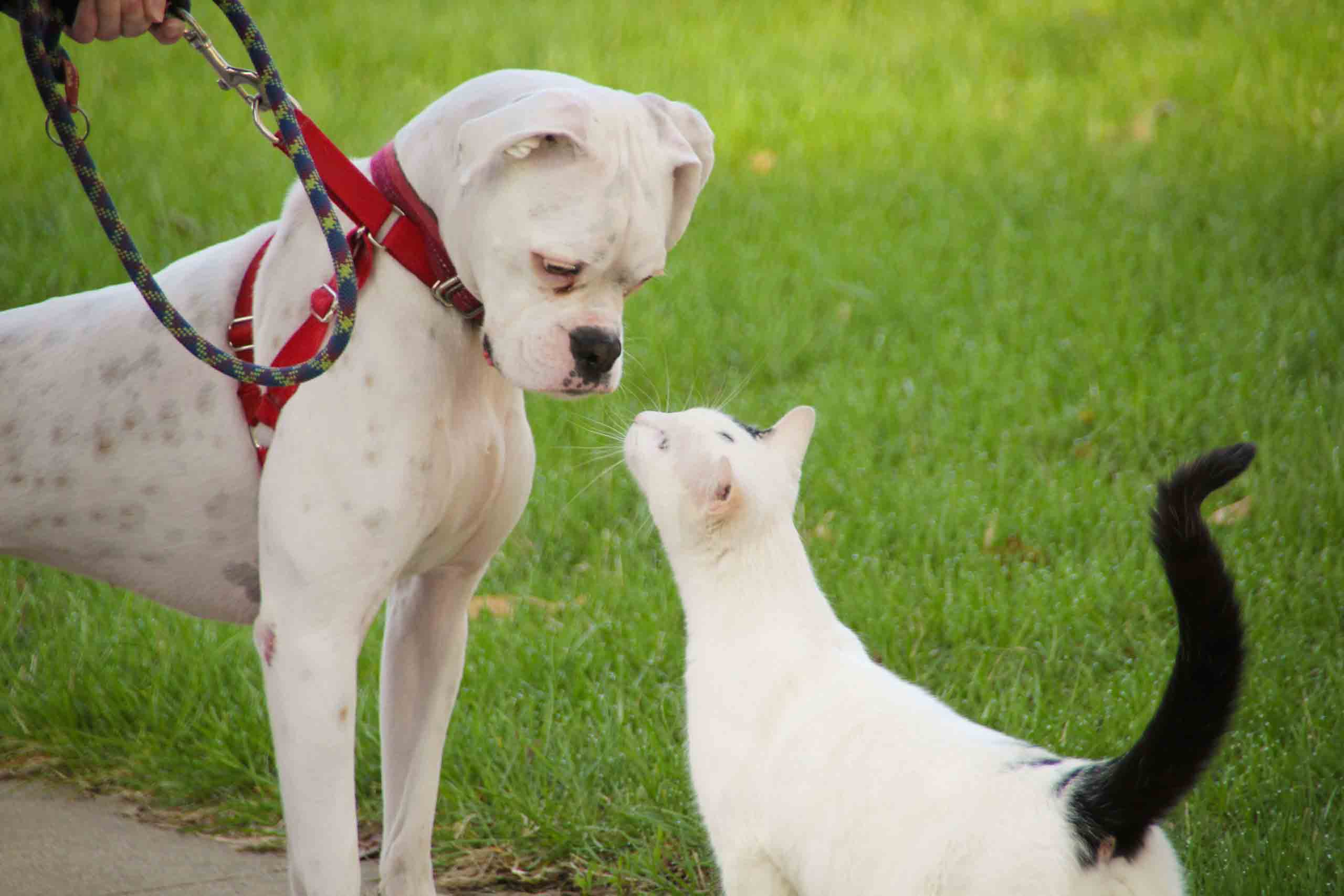YouTube videos can make pet introductions seem easy and adorable, but it’s not always smooth sailing. Here are some things to remember when introducing a new cat to a resident dog (or dog to cat) so that everyone gets along.
Successful introductions don’t happen overnight and may not even occur after a month. Be a patient pet parent and accept that extra training and professional help may be necessary.
Ideally, it’s best if both pets can meet before you adopt. See if you can introduce them first at the rescue center before you bring your new cat or dog home.
Start apart
Cats and dogs have keen senses of smell used for exploration. Give both pets a chance to sniff each other out first, whether they’re meeting at the rescue or at home. It’s a good idea to introduce them on neutral ground if you can because dogs and cats at home have already claimed that territory.
Once home, place your new cat’s or dog’s crate in its own space in a separate part of your house and let your new pal explore his or her new surroundings to become familiar with the new smells. Allow your new dog or cat time to leave his or her scent in the home so your resident pet can become acquainted with it as well.
A few hours or even a day later, let your furry siblings switch places. Have your alpha pet check out the new pet’s space. The American Humane Society suggests distracting your resident dog with a favorite treat or toy if he becomes transfixed on the cat or the cat’s new bed and area.
Leash, please
For their first meeting, make sure your dog is leashed and both pets are supervised. Pay close attention to how they respond and how their behavior changes during the introduction. Sniffing and playful behavior is completely normal for both animals. Cats can be territorial so if your cat is the first “sibling,” it may act dominant while she and the dog establish their dynamic.
Beware of barking, growling, hissing or overly aggressive play as this could signal fear and potentially lead to aggression. Keep both of their favorite toys or treats close by if you need a distraction. If unwanted behavior persists, you may need to separate the furry siblings for a while.
Ideally, both pets should be calm around each other and engage in their normal routines. If your cat isn’t declawed, make sure to keep her nails clipped during this introductory period. Regular play usually doesn’t involve claws but if they happen to come out, you want to make sure they’re dull and your dog doesn’t get hurt.
Free range…sort of
Once both pets are used to each other and can remain calm together, take your dog off his leash and let them both explore more freely. These interactions should be closely supervised and you should be ready to distract with treats and toys.
Pay close attention to their behavior, particularly how your alpha pet reacts because he or she is the furry pal you know best.
Be especially careful when introducing kittens to adult dogs. Kittens can be more fragile than puppies and a grown dog might not be aware of how much stronger he is than his little feline sister.
Alone but together
Once both pets can be around each other calmly, try leaving them alone in the same room. Always stay within earshot so you can intervene if anything goes awry. In the early part of this stage, don’t leave them alone for long — an hour at most. As they become fully comfortable with one another, feel free to leave them alone longer.
There’s no definitive timetable for bonding. It could take two weeks or two months. But if you stay patient and continue to give both pets the love and affection they need, the transition will happen organically. If the match between pets isn’t a healthy one, be prepared to involve a trainer or find a furry friend that suits your resident dog’s or cat’s demeanor and attitude better.
As you play and engage with your new dog or cat, your resident pal needs to understand that the newcomer is not a threat but a loving member of the family. Paying equal attention to both pets will help ensure a successful sibling relationship rather than rivalry.

